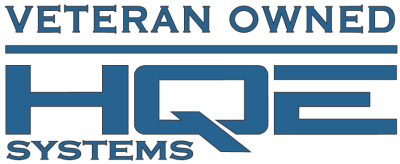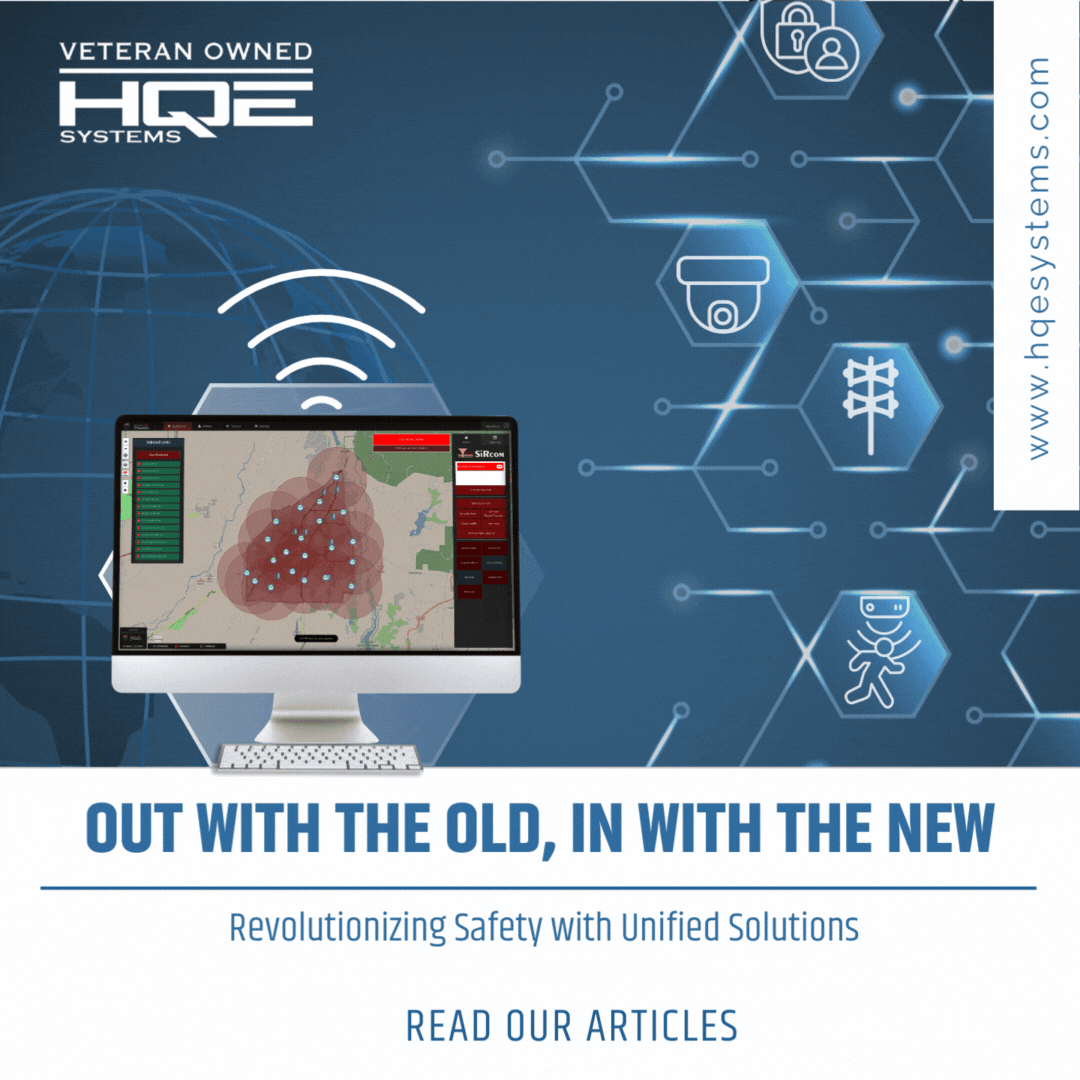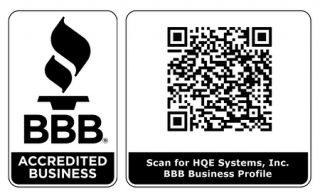Bridging the Gap: The Urgent Shift to Integrated Safety Solutions
In an era where the pace of technological advancement accelerates by the day, many sectors find themselves anchored to the past through their reliance on outdated safety systems. Envision the chaos in a chemical plant when a sensor, decades old and long past its prime, fails to detect a hazardous leak, leading to a critical delay in response. Workers scramble, unguided by modern notification systems, as precious minutes slip away. This scenario is far from hypothetical; it’s a stark reality for industries clinging to legacy safety protocols, underscoring a perilous gap between current needs and available defenses.
Similarly, consider the plight of a sprawling urban office complex when faced with a power outage amidst a security threat. Here, an array of disjointed safety systems—each from a different era, with different protocols—creates a labyrinth of confusion. Emergency lights flicker on, but alarms remain silent, their signals lost in the void between incompatible technologies. Within these walls, the urgency for a modern, integrated approach to safety management becomes palpably clear, as disjointed responses could mean the difference between safety and catastrophe.
These vignettes from the manufacturing floor, chemical plant, and urban office complex illustrate not isolated incidents but a widespread challenge across multiple sectors. They reveal the critical limitations of relying on antiquated safety systems that cannot speak to one another, cannot adapt to evolving threats, and cannot provide the instantaneous, cohesive response modern emergencies demand. This universal struggle underscores the imperative need for innovation, heralding the arrival of Unified Electronic, Indoor, and Outdoor Mass Notification Systems. Such systems represent not just an upgrade but a paradigm shift—a move towards a unified safety strategy that harnesses the best of current technology to protect, inform, and respond in real-time. As industries grapple with the complexities of today’s safety challenges, the call for a comprehensive, integrated safety solution has never been louder, nor more urgent. The transition to systems like SiSA marks a critical step forward, promising a future where safety management is seamless, proactive, and all-encompassing, ensuring that when the next emergency strikes, every second counts, and every action is coordinated.
A Close Call: Lessons from the Frontlines of Safety
On a brisk autumn morning, within the walls of a bustling metropolitan hospital, a seemingly ordinary day took a turn toward the unforeseen, laying bare the critical need for modern, unified safety solutions. The hospital, a nexus of care and healing, was operating at full capacity when a fire unexpectedly erupted in one of the research laboratories. Initially small and seemingly manageable, the fire quickly grew, fueled by chemicals and flammable materials, sending thick smoke billowing through the hospital corridors. This incident was about to test the limits of the hospital’s outdated, fragmented safety systems.
As the fire alarm sounded—a shrill, urgent noise that reverberated off the sterile walls—it became painfully apparent that the system was not equipped to manage such a crisis effectively. Despite the alarm, the automated lockdown procedures, which were crucial for containing the spread of fire and smoke, failed to engage. Moreover, the alarm system operated in isolation, not integrated with the hospital’s public announcement system. This glaring disconnect left staff, patients, and visitors without clear instructions or guidance, breeding confusion and panic at a time when calm, coordinated action was needed most.
In the ensuing chaos, visibility reduced as smoke filled the corridors. People scrambled toward exits, some inadvertently moving closer to the danger. Amid this turmoil, a nurse with quick thinking and a calm demeanor emerged as an unexpected beacon of leadership. Drawing on her emergency training and instincts, she activated a manual call point to alert the fire department. Yet, each second before their arrival felt interminable, and the realization that the hospital’s disjointed safety systems had exacerbated the situation was a bitter pill to swallow.
The fire department’s prompt and efficient response averted a full-blown catastrophe, but the incident left an indelible mark on the hospital administration
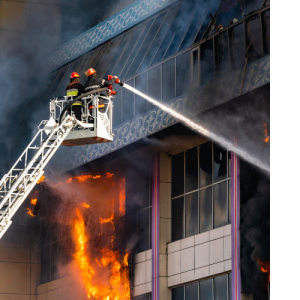
and staff. The close call served as a stark reminder of the vulnerabilities inherent in relying on outdated and siloed safety systems. It sparked a period of introspection and, ultimately, action across industries, resonating with educational institutions, corporate offices, and public spaces alike.
Driven by the lessons learned from that fateful day, the hospital embarked on a comprehensive overhaul of its safety protocols, choosing to invest in a state-of-the-art unified safety solution. This new system seamlessly integrated fire alarms, automated lockdowns, and public announcements into a cohesive whole, ensuring clear, immediate communication and response in emergencies.
This narrative underscores the undeniable importance of unified emergency management solutions in safeguarding communities. In moments of crisis, the ability of our systems to act in concert, providing swift, coordinated responses, can mean the difference between containment and catastrophe. The story of that autumn day serves as a compelling call to action, urging institutions across sectors to embrace modern, integrated safety systems that protect not just individuals but the very essence of our communal spaces.
Understanding the Landscape: The Complexity of Safety Today
In today’s rapidly evolving world, the landscape of safety and security presents a complex tapestry of challenges that span across diverse industries. From the unpredictability of natural disasters, such as hurricanes and earthquakes, to the insidious threats posed by cyber attacks and technological failures, the spectrum of risks is broader and more intricate than ever before. Each industry, whether it be healthcare, education, manufacturing, or technology, faces its unique set of vulnerabilities, yet they share a common struggle: navigating the limitations of outdated and siloed safety systems.
These traditional systems, often developed in response to specific, isolated threats, are ill-equipped to handle the multifaceted nature of today’s safety challenges. Their inherent lack of interoperability and adaptability creates significant barriers to effective risk management. For instance, a hospital relying on a decades-old fire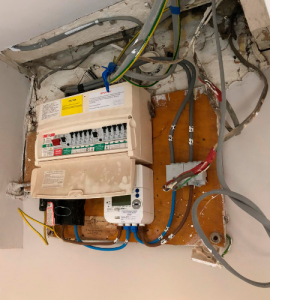 alarm system may find it woefully inadequate in the face of a complex, multi-hazard emergency situation like a fire coupled with a power outage and data breach. Similarly, an educational institution may struggle to communicate swiftly and effectively with its campus community during a fast-moving weather event, if its alert systems are fragmented and uncoordinated.
alarm system may find it woefully inadequate in the face of a complex, multi-hazard emergency situation like a fire coupled with a power outage and data breach. Similarly, an educational institution may struggle to communicate swiftly and effectively with its campus community during a fast-moving weather event, if its alert systems are fragmented and uncoordinated.
The consequences of relying on such fragmented systems are not merely operational inefficiencies; they can have dire implications for safety, property, and even lives. The stark reality is that in the face of an emergency, the ability to respond swiftly, cohesively, and intelligently can make all the difference. This recognition is driving a paradigm shift towards integrated safety solutions that can bridge the gaps between disparate systems, offering a unified approach to manage the all-hazards landscape of modern threats. Such solutions promise not only to enhance the responsiveness of emergency protocols but also to transform the very foundation of safety management across industries.
The Turning Point: Embracing Change for a Safer Future
At a pivotal moment in the evolution of safety protocols across varied industries, the advent of Unified Electronic, Indoor, and Outdoor Mass Notification Systems (EMNS) heralds a groundbreaking shift. This innovative approach to emergency management signals a profound transformation, erasing the limitations of outdated systems with a comprehensive solution that spans the breadth of safety needs. Unified EMNS stands at the vanguard of this significant evolution in safety management, offering a beacon of hope and efficiency that transcends traditional industry barriers.
The development of Unified EMNS is a direct response to the urgent need for a cohesive safety infrastructure capable of bridging disparate alert systems under a unified operational umbrella. Historical reliance on fragmented, specialized systems has proven inadequate against the backdrop of increasingly complex emergencies that require swift, synchronized responses across varied communication channels and environments. By integrating these isolated systems, Unified EMNS introduces an all-encompassing platform, ensuring immediate, clear communication regardless of the emergency’s nature or the context in which it arises.
Leveraging state-of-the-art technology, including the expansiveness of cloud computing, the connectivity of the Internet of Things (IoT), and the predictive power of artificial intelligence (AI), Unified EMNS offers a dynamic, adaptable solution. It is equipped to handle an extensive range of potential crises, from the unpredictability of natural disasters and the fallout of technological malfunctions to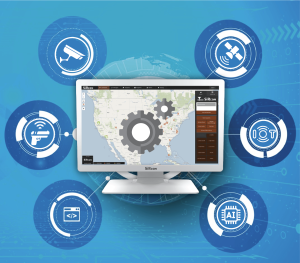 the immediate threats posed by security breaches and public health emergencies. This system navigates the complex nuances of each unique situation, offering tailored, actionable instructions to all affected parties.
the immediate threats posed by security breaches and public health emergencies. This system navigates the complex nuances of each unique situation, offering tailored, actionable instructions to all affected parties.
The embrace of Unified EMNS marks a critical juncture in the journey toward improved safety management, moving from a patchwork of reactive measures to a strategic, all-inclusive approach. It symbolizes a collective commitment to a future where safety is not merely an aspiration but a tangible, achievable reality. As various sectors adopt this innovative system, they not only enhance their capability to safeguard against emergencies but also underscore a resolute dedication to the welfare and resilience of their communities in an era of unpredictable challenges.
Deep Dive: SiSA – Leading the Charge in Modern Emergency Management
In the evolving landscape of emergency management, the advent of SiSA (Safety in Seconds Application) marks a watershed moment, heralding a new era of integrated safety solutions that transcend traditional industry boundaries. With its sophisticated approach to emergency response, SiSA has quickly become a paragon of modern safety protocols, embodying the core principles of integration, adaptability, and comprehensive threat management. This detailed examination of SiSA’s role illuminates its significance as a beacon of modern, integrated safety solutions, showcasing its broad impact across a variety of settings and industries.
Unprecedented Integration: The Core of SiSA
Central to SiSA’s innovation is its unparalleled capability for integration. In an age where safety systems are often disparate and uncoordinated, SiSA introduces a harmonious orchestration of alerts and responses, blending electronic, indoor, and outdoor notifications into a cohesive command center. This holistic approach ensures a coordinated, timely response to a diverse array of emergencies, including natural disasters, technological failures, and security breaches. For example, in a corporate environment, SiSA seamlessly unites fire detection systems, security cameras, and communication networks, ensuring a unified response mechanism that is both swift and efficient.
Adaptability: The Backbone of SiSA’s Framework
SiSA’s architecture is fundamentally built on flexibility, allowing it to meet the specific needs of various environments, from bustling city hospitals and sprawling university campuses to high-tech manufacturing plants. This adaptability ensures that SiSA can be customized to fit the unique safety requirements of any setting, providing solutions that address distinct industry vulnerabilities. In healthcare settings, SiSA adeptly balances patient safety with data security, managing a spectrum of potential emergencies with finesse and precision.
All-Hazards Approach: Ensuring Comprehensive Coverage
SiSA distinguishes itself through its all-encompassing approach to emergency management. Acknowledging that modern threats defy simple categorization, SiSA is meticulously designed to address an extensive range of emergencies. Its comprehensive coverage, encompassing environmental monitoring, threat detection, and crisis communication, guarantees that no aspect of an emergency is overlooked. For instance, SiSA’s capacity to integrate with environmental sensors allows for real-time monitoring and response during natural disasters, providing crucial updates and instructions to affected populations.
Transformative Impact Across Sectors
The versatility and comprehensive nature of SiSA have catalyzed its adoption across diverse sectors, each deriving significant benefits from its advanced safety management capabilities. Educational institutions leverage SiSA to enhance campus security, instilling a sense of security among students and staff through instantaneous communication and strategic emergency responses. Businesses incorporate SiSA into their continuity plans, mitigating risks and minimizing operational disruptions. Furthermore, public sector agencies value SiSA for its scalability, which is crucial for safeguarding large communities with efficiency and precision.
SiSA in Action: Real-World Applications
Beyond theoretical advantages, SiSA’s real-world applications provide compelling evidence of its effectiveness. In the aftermath of a severe storm, a municipal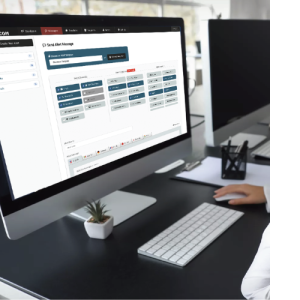 government utilized SiSA to coordinate evacuation efforts, disseminate safety information, and manage recovery operations, exemplifying SiSA’s critical role in community resilience. Similarly, a technology firm credited SiSA with thwarting a significant cybersecurity threat, thanks to its integrated alert system that enabled rapid lockdown procedures and safeguarded sensitive data.
government utilized SiSA to coordinate evacuation efforts, disseminate safety information, and manage recovery operations, exemplifying SiSA’s critical role in community resilience. Similarly, a technology firm credited SiSA with thwarting a significant cybersecurity threat, thanks to its integrated alert system that enabled rapid lockdown procedures and safeguarded sensitive data.
Conclusion: A Vanguard of Safety Technology
As we delve deeper into SiSA’s capabilities and its transformative potential, it becomes evident that SiSA is not just leading the charge in modern emergency management—it is redefining it. By fostering an environment where safety protocols are integrated, dynamic, and all-encompassing, SiSA paves the way for a future where communities and organizations are not merely reactive to threats but are fortified against them. In this pursuit, SiSA embodies the pinnacle of safety innovation, providing a blueprint for the next generation of emergency management solutions.
Hypothetical Case Study 1: Metropolitan Hospital’s Quantum Leap in Crisis Management
Crisis Management
In a bustling metropolitan hospital, the adoption of SiSA was nothing short of revolutionary. Facing a dire scenario where a chemical spill coincided with a power outage, the hospital’s previous piecemeal safety systems were inadequate. SiSA’s integrated solution seamlessly coordinated emergency lighting, secured hazardous zones, and communicated real-time updates to all hospital personnel. Automated alerts provided staff with specific instructions based on their location and role, ensuring a coordinated evacuation of affected areas while maintaining critical care without interruption. This level of sophisticated, targeted response was unprecedented, highlighting SiSA’s role in enhancing healthcare safety and operational continuity.
Hypothetical Case Study 2: University Campus Safety Transformation
A university campus, sprawling across several acres, once struggled to communicate effectively during emergencies. The implementation of SiSA marked a new era of campus safety. When a hypothetical tornado approached, SiSA’s advanced geofencing technology and multi-channel alert system ensured that students in vulnerable outdoor locations received urgent shelter instructions, while those in safe buildings were advised to stay put. The system also activated emergency sirens and digital signage, providing clear, concise directions that minimized panic and maximized safety. Post-event feedback from the campus community praised SiSA’s precise and calm handling of the situation, showcasing its adaptability to the unique needs of educational environments.

Hypothetical Case Study 3: Revolutionizing Industrial Plant Safety Protocols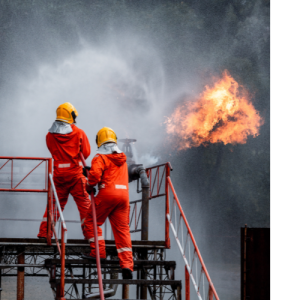
In the high-stakes environment of a chemical manufacturing plant, the introduction of SiSA was a game-changer. When sensors detected a potentially explosive gas leak, SiSA immediately sprang into action, integrating sensor data with plant layout information to identify the leak’s source and affected zones. It then dispatched targeted alerts to evacuate those at risk and directed emergency response teams to the scene with detailed maps. Furthermore, SiSA interfaced with the plant’s ventilation system to mitigate the leak’s spread. This integrated, intelligent response minimized the incident’s impact, demonstrating SiSA’s crucial role in safeguarding industrial settings against complex hazards.
Hypothetical Case Study 4: Elevating Public Safety in Urban Environments
For a city government, managing public safety during large-scale events presented significant challenges. Adopting SiSA transformed its approach to public safety, enabling efficient, coordinated responses to incidents that previously would have caused widespread confusion. During a city-wide festival, when a suspicious package was reported, SiSA’s system analyzed the threat level and location, disseminating targeted alerts to evacuate nearby areas while avoiding unnecessary alarm elsewhere. It provided real-time updates to law enforcement and emergency services, streamlining their response and ensuring the situation was resolved with minimal disruption. This scenario exemplifies SiSA’s effectiveness in enhancing urban safety, showcasing its scalability and precision in managing public safety challenges.
presented significant challenges. Adopting SiSA transformed its approach to public safety, enabling efficient, coordinated responses to incidents that previously would have caused widespread confusion. During a city-wide festival, when a suspicious package was reported, SiSA’s system analyzed the threat level and location, disseminating targeted alerts to evacuate nearby areas while avoiding unnecessary alarm elsewhere. It provided real-time updates to law enforcement and emergency services, streamlining their response and ensuring the situation was resolved with minimal disruption. This scenario exemplifies SiSA’s effectiveness in enhancing urban safety, showcasing its scalability and precision in managing public safety challenges.
Expanding the Impact of Emergency Management
These hypothetical case studies across the healthcare, education, manufacturing, and public sectors illustrate SiSA’s transformative potential in emergency management. Each scenario demonstrates how SiSA’s comprehensive, integrated approach can significantly enhance safety outcomes, proving indispensable in the modern landscape of emergency preparedness. By adopting SiSA, organizations across industries not only mitigate risks more effectively but also foster a culture of safety and resilience. SiSA stands as a testament to the power of innovation in creating a safer future, where technology and strategic planning converge to protect and preserve lives and assets against an ever-evolving array of threats.
Implementation Insights: Smooth Transitions to Unified Systems
Transitioning to a unified system like SiSA, capable of transforming emergency management across various sectors, involves meticulous planning, implementation, and stakeholder engagement. This journey, while complex, can significantly enhance an organization’s safety and responsiveness. Here are actionable insights to ensure a smooth transition:
1. Comprehensive Planning
Start with a Needs Assessment: Understand the specific safety challenges and requirements of your organization. Identify gaps in your current systems that SiSA can fill. This assessment should include input from all levels of the organization to ensure a holistic view of needs.
Develop a Clear Implementation Roadmap: Outline the steps needed to transition to SiSA, including timelines, responsibilities, and key milestones. A phased approach often works best, starting with critical areas before a full-scale rollout.
2. System Customization and Integration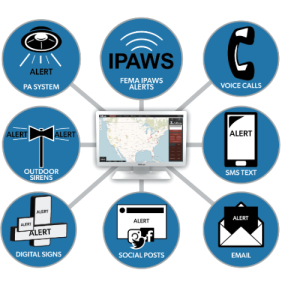
Customize According to Organizational Needs: Leverage SiSA’s flexibility to tailor the system to your unique requirements. This might involve customizing alert protocols, integration with existing safety systems, and setting up specialized communication channels.
Ensure Seamless Integration: Work closely with SiSA’s technical team to integrate the new system with your existing infrastructure. This includes not only technological integration but also aligning operational procedures and emergency response strategies.
3. Stakeholder Engagement and Training
Engage Stakeholders Early: From executives to front-line employees, ensure that stakeholders are informed about the transition to SiSA. Highlight the benefits, such as improved safety and streamlined communication, to garner support.
Comprehensive Training Programs: Develop training programs that cover how to use SiSA effectively in various emergency scenarios. Training should be role-specific, ensuring that everyone knows their responsibilities and how to execute them under the new system.
4. Testing and Feedback
Conduct Thorough Testing: Before going live, conduct comprehensive tests of the SiSA system. This should include simulated emergency scenarios to test the effectiveness of communication channels and response protocols.
Incorporate Feedback for Continuous Improvement: After initial implementation, solicit feedback from users to identify any issues or areas for improvement. Continuous refinement based on real-world use and feedback is crucial for the long-term success of the system.
Conclusion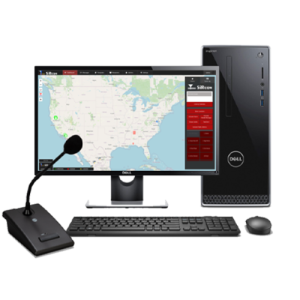
The transition to a unified system like SiSA represents a significant advancement in an organization’s emergency management capabilities. By following these insights—focused on planning, customization, stakeholder engagement, and continuous improvement—organizations can ensure a smooth and effective transition. Ultimately, adopting SiSA not only enhances safety and responsiveness but also demonstrates a commitment to the well-being of everyone within the organization’s ecosystem.
Looking Ahead: The Future of Safety Management
As we gaze into the future of safety management, it’s evident that the landscape is poised for unprecedented transformations, driven by rapid technological advancements and a deepening commitment to organizational safety. The evolution of systems like SiSA, at the forefront of this revolution, promises to further redefine the paradigms of safety and emergency management across industries. Here are key developments to anticipate:
Integration of Artificial Intelligence and Machine Learning: AI and ML are set to play pivotal roles in predictive analytics, offering the ability to anticipate emergencies before they occur. Systems like SiSA could leverage these technologies to analyze vast amounts of data, identify patterns indicative of potential threats, and initiate preemptive measures, thus shifting from reactive to proactive safety management.
Enhanced Real-time Communication: The future will see an even greater emphasis on real-time, two-way communication systems that not only alert individuals to emergencies but also allow them to provide instant feedback. This could include status updates, requests for assistance, or on-the-ground reports, enabling a more dynamic and responsive safety protocol.
Augmented Reality for Emergency Training: The use of augmented reality (AR) in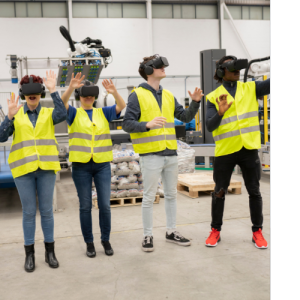 safety training will become more prevalent, offering immersive simulations of emergency scenarios. By integrating AR with systems like SiSA, organizations can provide realistic training experiences, preparing individuals for a wide range of emergencies with unprecedented fidelity.
safety training will become more prevalent, offering immersive simulations of emergency scenarios. By integrating AR with systems like SiSA, organizations can provide realistic training experiences, preparing individuals for a wide range of emergencies with unprecedented fidelity.
Greater Focus on Cybersecurity: As safety management systems become increasingly digital, protecting these systems from cyber threats will become critical. Innovations in cybersecurity protocols will be essential to safeguard sensitive data and ensure that safety management systems remain secure and reliable.
Global Standardization of Safety Protocols: As organizations operate on a global scale, the standardization of safety protocols across borders will become more important. Systems like SiSA could play a crucial role in establishing universal safety standards, ensuring consistent protection for employees and assets worldwide.
The future of safety management is not just about advancing technology but about creating an integrated, intelligent ecosystem that empowers organizations to protect their most valuable assets: their people and their operations. With systems like SiSA leading the charge, the path ahead is both promising and exciting, heralding a new era of safety and preparedness that is adaptable, resilient, and inclusive.
Conclusion: A Unified Call to Action for Enhanced Safety
In an era where safety challenges are increasingly complex and multifaceted, the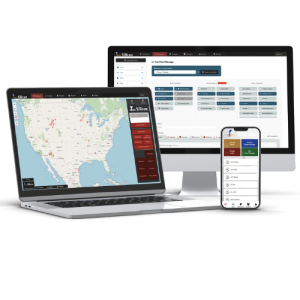 call for innovative, integrated safety management solutions like SiSA has never been more pressing. This exploration underscores the paramount importance of adopting unified systems that seamlessly integrate emergency alerts and responses across various platforms, ensuring comprehensive coverage and adaptability to a wide range of threats. Organizations across all sectors are encouraged to proactively embrace these modern systems, not merely as upgrades to their safety protocols but as essential steps toward fostering a safer, more resilient future. The transition to systems like SiSA represents not just an investment in technology but a commitment to the well-being of communities, employees, and assets. Let this be a call to action for all: to prioritize safety through unity, innovation, and foresight.
call for innovative, integrated safety management solutions like SiSA has never been more pressing. This exploration underscores the paramount importance of adopting unified systems that seamlessly integrate emergency alerts and responses across various platforms, ensuring comprehensive coverage and adaptability to a wide range of threats. Organizations across all sectors are encouraged to proactively embrace these modern systems, not merely as upgrades to their safety protocols but as essential steps toward fostering a safer, more resilient future. The transition to systems like SiSA represents not just an investment in technology but a commitment to the well-being of communities, employees, and assets. Let this be a call to action for all: to prioritize safety through unity, innovation, and foresight.
HQE Systems is a certified Veteran Owned Company. For more information about HQE Systems Inc. and its emergency management, electronic security, and integration solutions, please visit www.hqesystems.com.

Contact: David Ditto (Early Warning Systems Subject Matter Expert)
Email: David.Ditto@hqesystems.com
Phone Number: (843) 872-7020
____________________
HQE Systems, Inc. | HQE is a Minority-Owned Service Disabled Veteran Owned Small Business (SDVOSB) providing full solutions for: Mass Notification Systems, Electronic Security Systems, Software Development Services, Contract Support, and Prototyping Services. As a brand-agnostic solutions provider, HQE prides itself in providing the BEST solution for the project. HQE possesses over 30+ factory certifications and reseller licenses to ensure our clients receive the highest quality service at the ideal budget. HQE can provide full design, installation, integrations, upgrades, and long-term maintenance support for any size and scope project.
